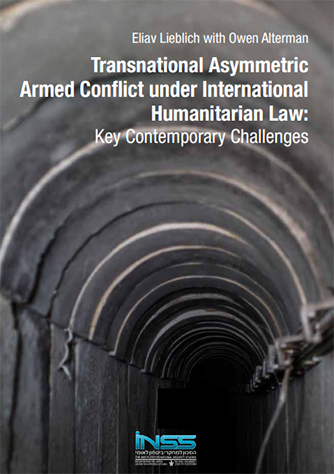Publications
Tel Aviv: Institute for National Security Studies, 2015

The change in the nature of armed conflict, from the classic war between sovereign states to the contemporary mode of armed conflict involving non-state actors that at times operate across state borders, raises a new set of legal issues and dilemmas. These legal challenges emanate both from the new nature of warfare and from the increasing emphasis in international legal discourse on the promotion of human rights.
This book addresses some of the major challenges that contemporary conflicts, particularly transnational asymmetric armed conflicts, present in the context of international humanitarian law. Against the growing interface between international humanitarian and human rights law, it discusses the normative framework regulating such conflicts as well as particular issues concerning the law on targeting, such as the application of the principles of distinction and proportionality in scenarios of asymmetric conflict. The book defines the different positions in international discourse regarding these dilemmas and seeks wherever possible to reconcile them, at the same time that it highlights instances where there can be no reconciliation.
The volume attempts to map the approaches toward some of the most pressing issues on the regulation of contemporary armed conflicts. Intended for military commanders, policymakers, lawyers, and the general public, it provides a detailed summary of these dilemmas that can serve decision makers in their formulation and assessment of state action and policy.
Click here for the full text.
Contents
Foreword by Eyal Benvenisti and Yehuda Ben Meir
Introduction
Chapter 1 – Transnational Asymmetric Armed Conflict: Definition and General Legal Regimes
Chapter 2 – The Principle of Distinction in Transnational Asymmetric Armed Conflict: Targeting of Persons
Chapter 3 – The Principle of Distinction in Transnational Asymmetric Conflict: Targeting of Objects
Chapter 4 – Proportionality in Asymmetric Warfare and Closely Related Issues
Chapter 5 – A Few Comments on the Duty to Investigate Alleged Violations of International Law during Armed Conflict
Concluding Remarks
Detailed Summary
Selected Literature


